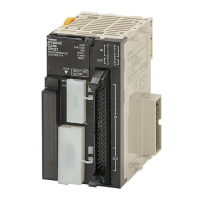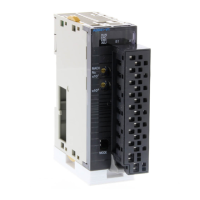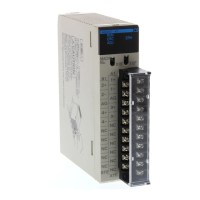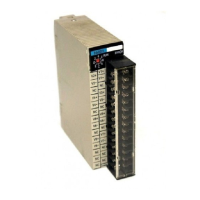154
Built-in Outputs Section 6-2
Switching from Continuous Mode (Speed Control) to Independent Mode (Positioning)
Conditions Required to Execute an Instruction During Operation
The following table shows the pulse output instructions that can be executed
while another pulse output instruction is being executed.
When positioning is being performed in independent mode, another indepen-
dent mode instruction can be executed. When speed control is being per-
formed in continuous mode, another continuous mode instruction can be
executed. PLS2(887) is only instruction that can be used to switch between
modes. (PLS2(887) can switch to a positioning operation from a continuous
mode operation started with ACC(888).)
Example applica-
tion
Frequency changes Description Procedure
Instruction Settings
Change from speed
control to fixed dis-
tance positioning
during operation
PLS2(887) can be
executed during a
speed control oper-
ation started with
ACC(888) to
change to position-
ing operation.
Note An error will
occur if a
constant
speed can-
not be
achieved
after switch-
ing the mode.
If this hap-
pens, the
instruction
execution will
be ignored
and the previ-
ous opera-
tion will be
continued.
ACC(888)
(Continu-
ous)
↓
PLS2(887)
•Port
•Acceleration rate
•Deceleration rate
•Target frequency
•Number of pulses
Note The starting fre-
quency is ignored.
Fixed distance feed
interrupt
Pulse frequency
Target
frequency
Outputs the number of
pulses specified in
PLS2(887) (Both relative
and absolute pulse
specification can be used.)
Execution of
ACC(888)
(continuous) Execution of
PLS2(887)
Time
Pulse
frequency
Present
frequency
Execution of
ACC(888)
(continuous) Execution of
PLS2(887) with the
following settings
• Number of pulses = number
of pulses until stop
• Relative pulse specification
• Target frequency = present
frequency
• Acceleration rate = Not 0
• Deceleration rate = target
deceleration rate
Time

